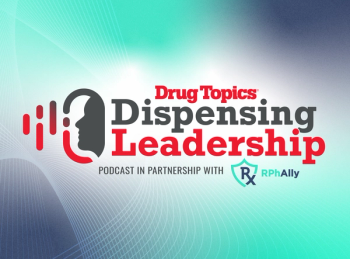
Pseudoephedrine primer: Federal and state regulations
Federal and state laws impose limits on the amount of pseudoephedrine a person may buy and a pharmacy may sell. Your state's limits may be more strict than the limits imposed by the feds.
Ken BakerPharmacists as healthcare professionals have many duties. The first must be the welfare of our patients. Most pharmacists would agree that our professional responsibilities to patients go beyond the minimum legal duty to prevent medication errors and include: performing prospective drug reviews; advising patients of common, severe side effects of prescribed drugs; and warning patients and prescribers when allergies or contraindications are possible.
Duty to society
We also owe a duty to society at large. Pharmacists are the gatekeepers of dangerous drugs. We are at the end of the protected, closed loop of drug distribution. When it comes to protecting society from the illegal traffic in harmful drugs, we are in a position to make a difference.
In addition to controlling the use of opioids and other controlled substances, our responsibility includes curtailing the methamphetamine scourge, which has grown to epidemic proportions. The National Institute of Drug Abuse has said, “Chronic abuse can lead to irreversible brain and heart damage, memory loss, psychotic behavior, rages, violence, and ultimately the inability to care for oneself and one’s children.”1
According to data collected by the Substance Abuse and Mental Health Services Administration, “13 million people age 12 or older in the U.S. have used methamphetamine at some point in their lives.”1 We are in a position to help curb misuse of this dangerous drug by controlling the availability of the precursor pseudoephedrine.
A brief guide to the limits
As every pharmacist who has worked in community pharmacy and most others know, federal and state laws impose relatively strict limits on the amount of pseudoephedrine a person may buy and a pharmacy may sell. State law may impose more strict limits, so it is important to understand the laws in your state.
Several states, including Illinois, Iowa, and Kansas, classify pseudoephedrine as a Schedule V controlled substance. Oregon and Mississippi have classified it as Schedule III.1 In the near future, more states are likely make pseudoephedrine prescription only.1
Absent stricter state law, the federal limits apply to pseudoephedrine sales. A handy guide to these are found on the internet in the DEA’s Pharmacist’s Manual, Appendix G, which translates the gram limits into number of tablets.2
For ephedrine (HCl and sulfate salts) and all strengths and salts of pseudoephedrine, daily retail sales are limited to 3.5 g. The number of tablets will vary according to the strength of the tablets sold. (See sample chart below and Appendix G of the DEA Pharmacist’s Manual).
In addition to the daily sales limit, there is a 30-day limit of 9 g of both ephedrine and pseudoephedrine.2 The monthly amounts allowed for mail-order sales is lower, at 7.5 g.
The National Precursor Log Exchange, or NPLEx, which is becoming increasingly available, is being used to track customer purchases in real time and to alert the pharmacist when the limit has been reached.
It should be noted that another substance, phenylpropanolamine, was subject to a voluntary recall several years ago and should no longer be sold for human use, as it has been deemed unsafe.
A regulated profession
Pharmacy is one of the most highly regulated professions.3 Pharmacists are the gatekeepers of dangerous drugs. As such we are in a position to control access to one of the most dangerous of the drugs of abuse. We are at the end of the protected, closed loop of drug distribution. When it comes to protecting society from the illegal traffic in harmful drugs, we can make a difference. In so doing, pharmacists not only follow the law but fulfill our duty to protect society.
References
1. Quoted in a white paper of the National Association of State Controlled Substances Authorities, April 2012. See, U.S. Department of Health and Human Services (DHHS), National Institutes of Health (NIH), National Institute on Drug Abuse (NIDA), “Methamphetamine Abuse and Addiction,” Research Report Series, NIH Publication No. 06-4210, Revised September 2006, available at http://www.drugabuse.gov/PDF/RRMetham.pdf, accessed by NASCSA, November 18, 2011.
2. See
3. Field, R.I. “Why is health care regulation so complex?”, Pharmacy & Theraputics Journal, P.T. 2008 Oct. 33(10) 607–608. See
Newsletter
Pharmacy practice is always changing. Stay ahead of the curve with the Drug Topics newsletter and get the latest drug information, industry trends, and patient care tips.




































































































































